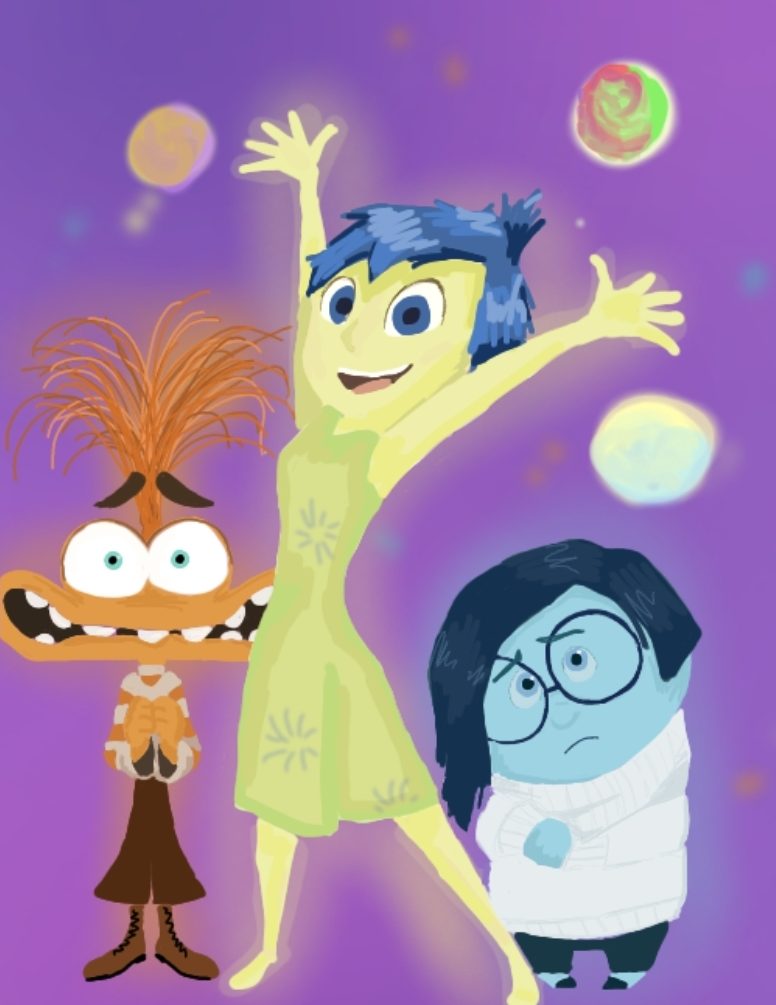“Inside Out 2,” the long-awaited sequel to the 2015 hit success Inside Out, walks the viewers through the main character Riley’s current stage in life: puberty. Brought on by developmental changes, Riley faces new emotions and challenges all the while gaining a better sense of who she is throughout this film. During the film’s runtime of one hour and 36 minutes, “Inside Out 2” masterfully balances humor and emotional resonance. The animation is vibrant, the graphics are beautifully executed, and the characters are effectively cast.
The movie begins similarly to the first, with Joy reacquainting Riley’s feelings and how their system works with the audience. Each emotion gets introduced as they individually take turns helping Riley (Kensington Tallman) make choices. The emotions, Joy (Amy Poehler), Sadness (Phyllis Smith), Anger (Lewis Black), Fear (Tony Hale), and Disgust (Liza Lapira), work together to ensure all emotions are respected and can all play a sufficient role in Riley’s life. The big difference in this movie compared to the original is Riley’s sense of self: a beautiful and intricate web of her beliefs based on her memories.
The web of beliefs are disrupted when new complex emotions are introduced. A puberty alarm goes off one night, leading Anxiety (Maya Hawke), Ennui (Adéle Exarchopoulos), Envy (Ayo Edebiri), Embarrassment (Paul Walter Hauser), and Nostalgia (June Squibb) to find a home in her mind. The old emotions are forced to leave after the new emotions make them feel useless. Throughout the rest of the movie, the old emotions find their way back to headquarters while the new emotions help Riley navigate through hockey camp to prepare her for high school, undoing the impact the old emotions had on her personality.
The movie was well written, with all of the emotions having very unique roles in Riley’s mind. Many situations Riley went through, like the fear of being left alone or being the topic of gossip, are relatable situations that most people can relate to, making the message of the movie more impactful. The way the emotions handled these situations was creative with a touch of relatable humor, like food floating down Riley’s stream of consciousness and sarcasms creating large cracks in the platforms in her mind. Any food Riley thought of would float down her stream of consciousness, resulting in pizza, asparagus, broccoli, cardboard, and more to float through. The sarcasm made all voices near it sound bitter and acerbic, which led to an amusing dispute between the characters.
One criticism, though, was the character design in Riley’s mind compared to the emotions in everyone else’s mind. Every character’s emotions have a similar look to the character with Riley’s mom having glasses and a hairstyle that matched the emotions in her mind, and Riley’s father having a mustache and suit that matched his emotions. This is left open for interpretation and has gained many fan theories, mostly surrounding Riley’s sexuality, because of the lack of information, but since it was never addressed, viewers are simply left wondering.
Not only that, but the plot of “Inside Out 2” lacked pivotal character alignment and motivations, making the storyline feel like recycled material from the last movie with an absence of new plot points. This led to the movie feeling disappointing, boring, and predictable.
The movie had its ups and downs with a few foreseeable moments, but for the most part, the movie was imaginative, clever, and heartwarming, with thought-provoking scenes that added more depth to the original film. The themes of self-awareness, empathy, growth, and emotional regulation are well executed throughout the film, making it more easily relatable. The film is a beautiful exploration of the human experience and a reminder that emotions and experiences make people who they are.











































































































